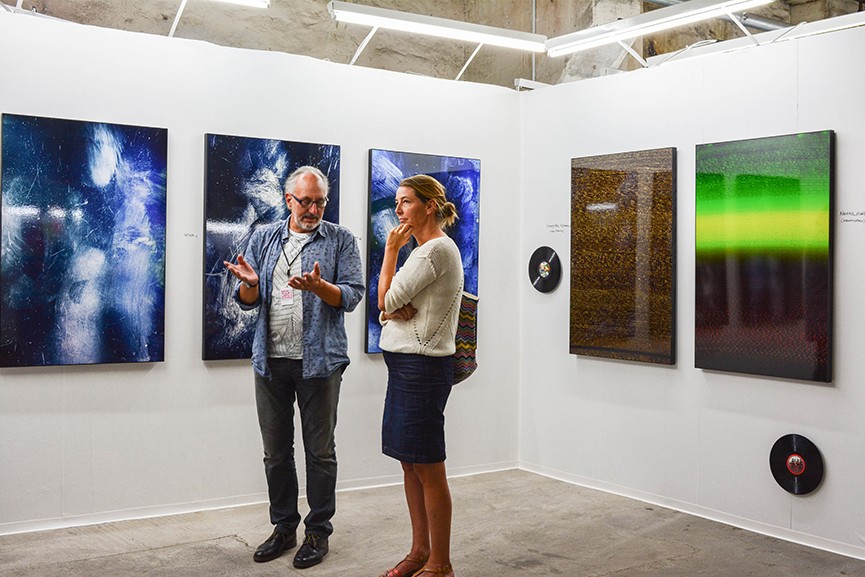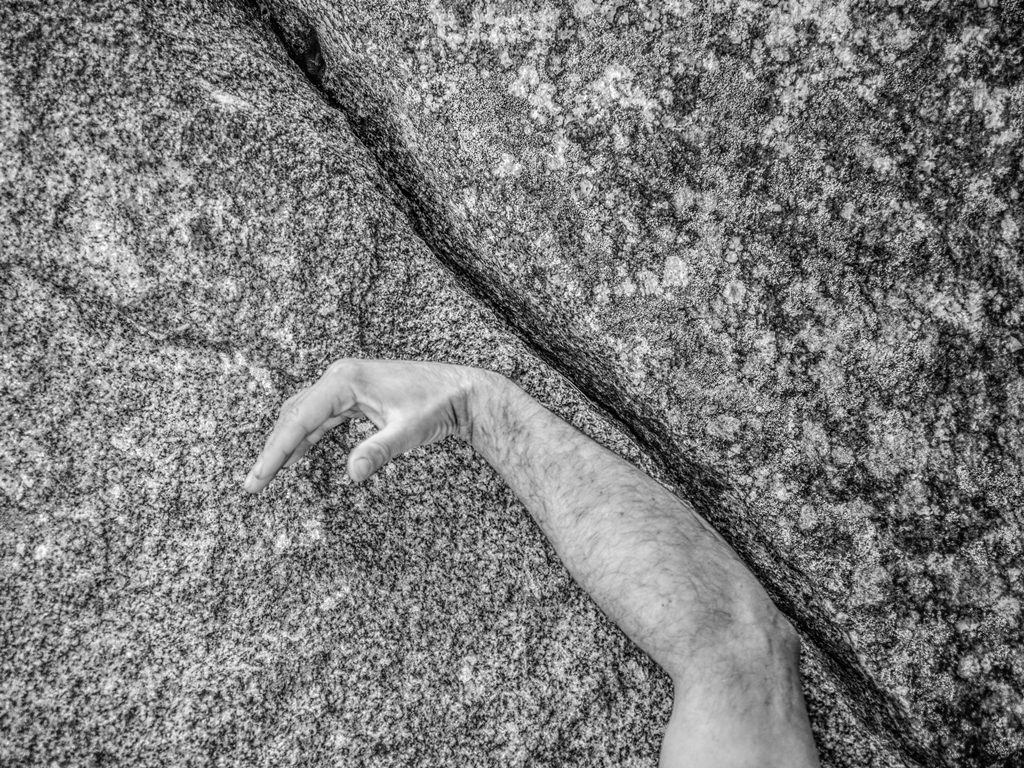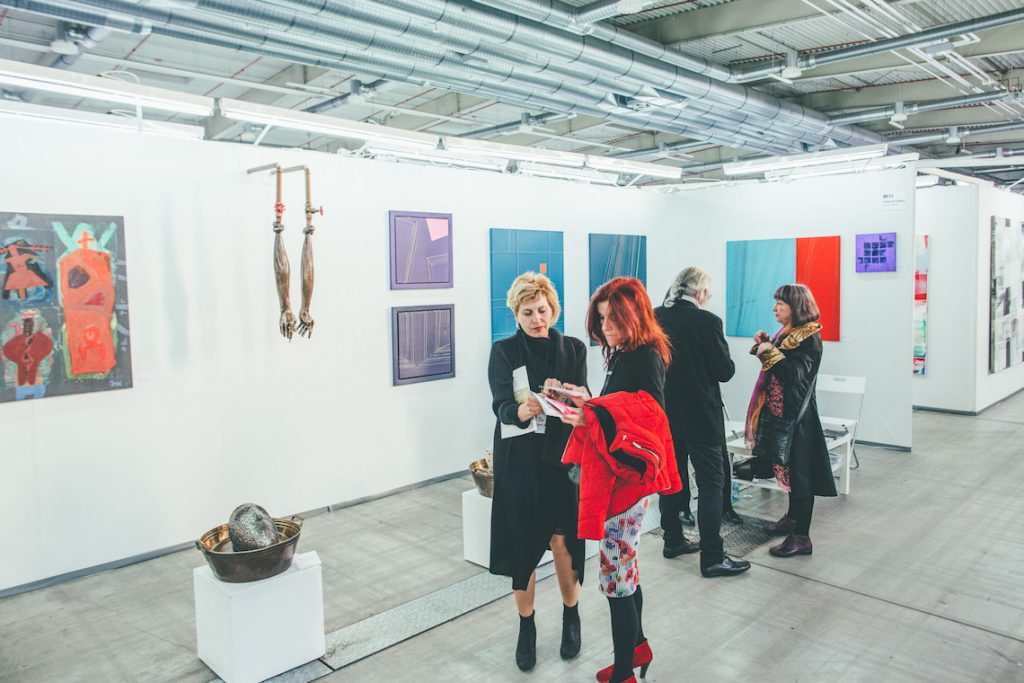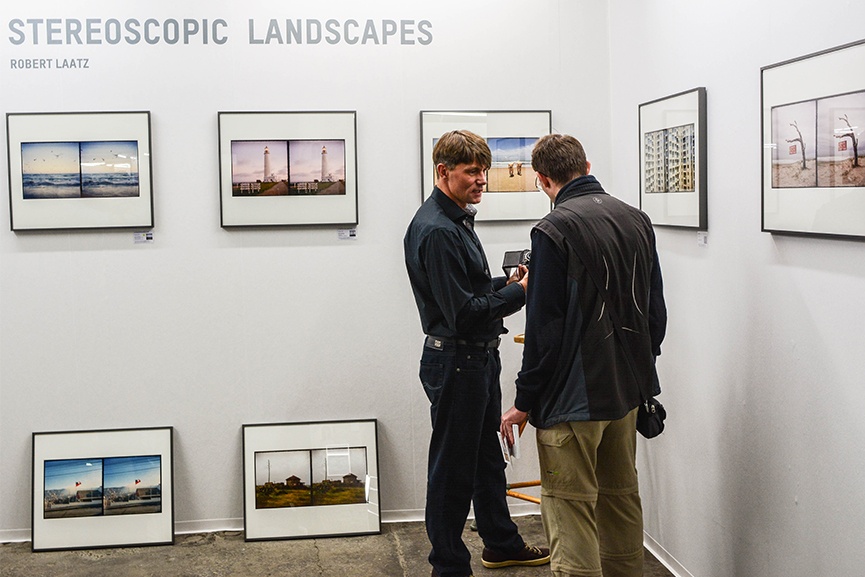
********************************************
Discovery Art Fair.Virtual is now online!
With about 70 exhibitors, our digital art fair offers the perfect opportunity to discover your new favorite artwork comfortably from home.
********************************************
Snobby and dismissive as it might seem, the art world is, in fact, a much broader term than it appears. What the most popular, mainstream media often propagate as the best is often merely the most expensive. We certainly cannot agree that all art should be so extravagantly priced. Actually, it’s safe to declare that Jeff Koons or Damien Hirst are exceptions to the rules, since they are single representatives of much, much larger scenes. Remember that Modigliani, for example, struggled to survive during his lifetime, while today, his “Nu couché” counts among the most expensive paintings ever sold.
The truth is out there, around thousands of artists and professionals who produce and deal with art out of passion. And to which the financial aspect is not the chief motivator. The level of their involvement in the creative matters often surpasses that of leading businessmen-gallerists. They stand for what they sell both personally and professionally. We can find these people promoting emerging artists, taking risks in the market and defending their choices with some courage and solid experience. Generally speaking, these professionals operate in the realm of affordable art, where prices never surpass ten- or twenty thousand euros, and where real jewels of tomorrow can be found.
For a novice collector, the affordable art scene might be the best place to start collecting. Still, what does it take to recognize a potential investment?

Amedeo Modigliani – Nu couché – Christie’s sale, New York, 9 November 2015; image Wikimedia Commons
How do We Define Affordable Art
Before you embark on your journey as a collector and buy your first piece, it’s important to recognize and acknowledge your starting position. If by any chance you belong to the fortunate few who do not need to worry about budget, then by all means – continue to the website of your favorite gallery or straight to a fancy opening. If like most of the art lovers around the world, your collector’s power is dependent upon a budget, the affordable art world might be closer to your realm.
Admittedly, “affordable” is a rather stretchy term as one budget might be very different from another, but there are some generally accepted traits of this type of artistic creation.
Accepting that there is (and should) be a budget for every art purchase gives a meaning to what is “affordable”. Some believe that this kind of art needs to be accessible to everyone, regardless of their financial situation. But this means that an art piece should sometimes cost as little as 10 euros, and never more than a couple of hundred. So, this term can be defined differently, by reviewing the economic situation in a particular country or region, by examining the overall purchase power and living standard. When we observe what can be considered affordable under these terms, we can find that the price range varies greatly. Although it’s accepted as a ready-made term, perhaps replacing “affordable” with “accessible” would be more correct. Be as it may, if we observe the Western hemisphere (Western Europe and the USA) and the social strata with the pertinent purchase power, we find a common agreement that an affordable art piece should not cost more than about 7500 euros (median value).
Be as it may, spending any type of money on art in a smart way is an investment. Although, we believe that deliberate investing in art carries a significant risk.

artfein Gallery
Do Not Invest Consciously
It’s good to know that art investment is deemed somewhat of a crude term, pertinent to art flippers. No self-respecting gallerist will promote this idea, regardless of its lingering in the air. Investing in art is generally a speculative activity. It depends on many rapidly-changing factors, with a completely insecure outcome. Who will succeed and who will not is very hard to predict, even for professional curators and critics. It’s usually not a single-artist effort, but a joint venture of the whole team of promoters surrounding the creative author.
Some of the things to consider in terms of art investment are the ever-changing variables in the market, as not all art is always in fashion. A couple of years ago sculpture was back, and lately, everybody is promoting textile, while neon has made a comeback about two years ago. Still, we don’t really know how long is any of these trends going to last, nor what the next one will be. Further, the art market is extremely illiquid and imprecise, a complete contrary to the clear and calculable financial markets, for example.
Naturally, paying a higher price for a piece by an established artist does result in the piece’s value increase more often. But when we speak about affordable art, there is always a matter of budget. Any research will reveal that there is practically one chief rule for buying art – get what you love, where budget falls in not-too-close second place.
Nevertheless, investing in art does not have to mean to invest money only. Investing time and research can prove as equally beneficial, where attending some of the affordable art events – like our trade fairs in Frankfurt and Cologne -, reading, and conversation with artists and professionals may just lead to a discovery of a future Modigliani.

Meeting the artist at BERLINER LISTE – Jürgen Bartenschlager
Beyond Decor – The Value of Art
Spending certain amounts of money on a new piece of art is a financial matter. But the amount spent does not need to reflect the real value of the purchase. If the goal is to build a collection or only to decorate a space, every art lover knows that living with art has returns that cannot be calculated. It gives us joy, can help improve our health or affect the mood, inspires us to contemplate and encourages understanding and humanity. This is one of the main reasons why buying art cannot ever be considered a waste. For those more practical aesthetes, there is a number of reasons to buy art, all of which prove that its value goes beyond the material.
Emerging artists, for example, cannot immediately price their work very highly, even if they are incredibly talented. Their productions are usually presented to the public by galleries that promote up and coming art. Or they manage to self-promote at an event such as an affordable art fair. What every collector needs to know is that these artists are not selling their work for prestige, they are making a living and financing their careers. Therefore, purchasing an emerging piece at a fair or from a gallery means that you are directly supporting a creative. The more supporters an artist has, the more chance they have to succeed, while the piece you purchased will gain in value.
When it comes to evaluation of art, there is a difference between buying editions and multiples and original art. Prints or photography, for example, are a great way to start a collection. But a print can never reach the selling worth of a unique painting or sculpture. Hence, stretching a budget to get an original might be a good idea, if it’s possible. If not, a cleverly curated collection of prints or photographs might be the best strategy to follow.
Lastly, never forget the suggestive power of art. Being involved in cultural activities can be a fantastic way for professionals from other areas to connect with their inner creativity, to relax and meet new, interesting people. And collecting art that is uplifting and atmospheric can become a precious element of life. Crucial is the way you approach collecting and what kind of art is right for you.

GSR Gallery
Know What You Like
This is probably one of the most interesting aspects of collecting art – learning about and meeting with the artists. It’s absolutely advised to attend gallery openings, but since they are one-time events, often overcrowded, a real connection is frequently impossible. Affordable art fairs, on the other hand, last for several days and the present artists are open to talking to the audience. Still, this shouldn’t be the sole source of information.
The Internet is invaluable when it comes to learning about contemporary artists. Not to mention a great number of magazines, news articles, interviews or even academic papers available, one could become a true expert on a certain artist – or even a scene – just by browsing online. Contemporary artists whose art is attainable to the middle class aren’t often found in large encyclopedias or textbooks, so a visit to the library could help expand a theoretical knowledge, but has little practical value. In the end, it all comes to that – value, since getting to know the artists and their work should provide some insight into appropriate market prices.
Studio visits or graduation exhibitions are also an excellent way to get better acquainted with an artist’s work, to learn their manner and to get a sense of how dedicated they really are. It’s important to know that dedicated artists are far more likely to succeed and get acclaim than those who just work on inspiration, from-time-to-time basis. Dedicated artists are also likely to appear more frequently on affordable art fairs, so getting an insight into their exhibition history would be a smart move.
Jumping into the market is therefore not an impossible mission, although the clever approach is advised. Still, there should be no confusion if a preferred piece seems a little “too affordable”. Some of the popular contemporary artists today, such as Andrew Salgado or Anthony Micallef, have started out with rather modest prices, as their market value grew and may still be on the rise. And then, there’s the excitement of establishing an early relationship with an artist and becoming one of the first, and perhaps even regular, collectors of their work.

Jordi Rosado – courtesy of the artist – Special print edition issued by Discovery Art Fair for Kölner Liste 2017
Looking for Affordable Art Online
The internet has influenced the way people look at art in the past few years probably more than any other media before. At the same time, a number of online platforms continue to change the market, relentlessly pushing it towards future. Online galleries, auction houses, and marketplaces offer a great variety of art that is easy to find and relate to. But, is looking for affordable art online something to start with?
To be fair, there is a number of respectable websites that offer a wide range of accessible art, such as Artfinder or SaatchiArt, to name only a couple. They have thorough platforms and huge databases of artists from around the world, so finding something to fit your taste should be easy. Still, buying online from such a platform comes with a significant risk.
Many of the artists that are listed (if not all) provide the information about themselves, which is often scarce. Sometimes, an additional online search does not give enough data, so even if we ignore the impersonal element, knowing the artist can be difficult. Further, the photographs provided can give an inaccurate image of the piece itself, especially if the texture and the physical aspect is important. Curation of these databases is frequently loose or absent, while only a few of the names are selected to take part in exhibitions, which affects their prices in return. It would be wrong to say that finding and buying excellent affordable art online is impossible, but it is a venture probably best left to experienced collectors.
One exception is Singulart, the leading online platform for contemporary art on the European market. Singulart’s mission is to connect artists and art lovers all over the world and thus make the art world more accessible, open and transparent. Carefully curated collections and personal art advisors will help you acquire the perfect artwork. You will have the opportunity to discover international talents as well as support local emerging artists.
For novices in the field, the internet is a great source of information, including the art buying platforms. Due to their vast databases, finding a style or an artist you like has never been easier, but we would still advise finding the way to see their work in person. What would be the perfect scenario is to find an artist who has an exhibition or is showing their work at a close by art fair and then go and meet them. If you still enjoy their work, you can safely continue to purchase it online. Before you go all digital, we still think that the old-school way of art buying will serve you the best.

At our art fair in Cologne
Where to Find Good Affordable Art
Looking for affordable art is not all that different from looking for art, in general. It’s more about finding a style you love or the artist whose work you enjoy than seeking out a single piece, while the price range can vary even in this specific field. Research, again, is the key to tackling this task. There is no collector who has too much information, and knowing what you’re after can make your path to purchase much smoother than usual.
If we talk about the actual place in which good affordable art can be spotted, they are the usual: galleries, exhibition events, art fairs or studios.
If you decide to browse galleries, you should be prepared for a very wide range of consulting approaches and suggestions. Each of the gallerists has their own voice, some of which might not agree with you. Stay diligent, though, and your fieldwork will definitely show results and there might even be a lasting relationship with a gallery on the horizon.
As mentioned earlier, group exhibitions, pop-ups, art-related events and similar happenings are not just places to have a good time, but also a clever way to see new art. Mind the organizer and their reputation and it will be easy to estimate if the presented art will fall in the right range for your personal budget. Sometimes, it’s not possible to buy art from these events directly, but every organizer or curator will be happy to put you in touch with the right people.
Affordable art fairs, such as any of our Discovery Art Fairs, are some of the best places to see new affordable art. These events are usually big, organized, and well-curated, while their goal is to put as many artists as possible in touch with collectors. Such fairs provide the widest and the most diverse collection of artists, styles, and galleries, all under one roof, so they cater equally well to both the experienced and the new collectors. The prices of exhibited art are usually as varied as the art itself, so it’s perfectly possible to find a piece that is both high in quality and inexpensive.
Last but not least, artists’ studios are a great way to source affordable art. These mysterious places burst with creative energy and provide an extra element exhibition spaces don’t have – the personal experience. Meeting the artist in their studio and outside it might be two very different experiences, so we recommend to do both. If you see their art in your collection, it would be a good gesture to extend your support and purchase something from their studio, but from an exhibition as well.
Albeit all of these sources of modestly priced art can prove valid and your knowledge impressive, none of these elements can provide a solid promise that a great find of today will be tomorrow’s treasure.

Robert Laatz booth
There Are No Guarantees in the Art Market
Some of the great auction houses might provide guarantees to their high-profile buyers. Here, we are talking about a different art market in which there are no guarantees. Acting in it is a risk and spending 1000 or 2000 euros on a piece will not ensure that its value will increase over time, even though it might. Some gallerists and art dealers claim that it is possible to start collecting with as little as 100 euros per piece! A common consensus is also that it is better to buy one more expensive work than several smaller ones. This should raise a chance of its market value growth in the future.
Remembering that affordable art collecting is similar to hunting for treasure – there is a chance of profit. But there is also an element of gamble. Finally, who knows how those artists who do not make it big today will do in the future. Your grandkids might just toast to you one day!
Lastly, it’s good to remember that the art market doesn’t have to feel exclusive, but it can be a platform for real-life adventure and view expansion. Because – art is for everyone! This much has always been clear to those who are not afraid to think out of the box.


